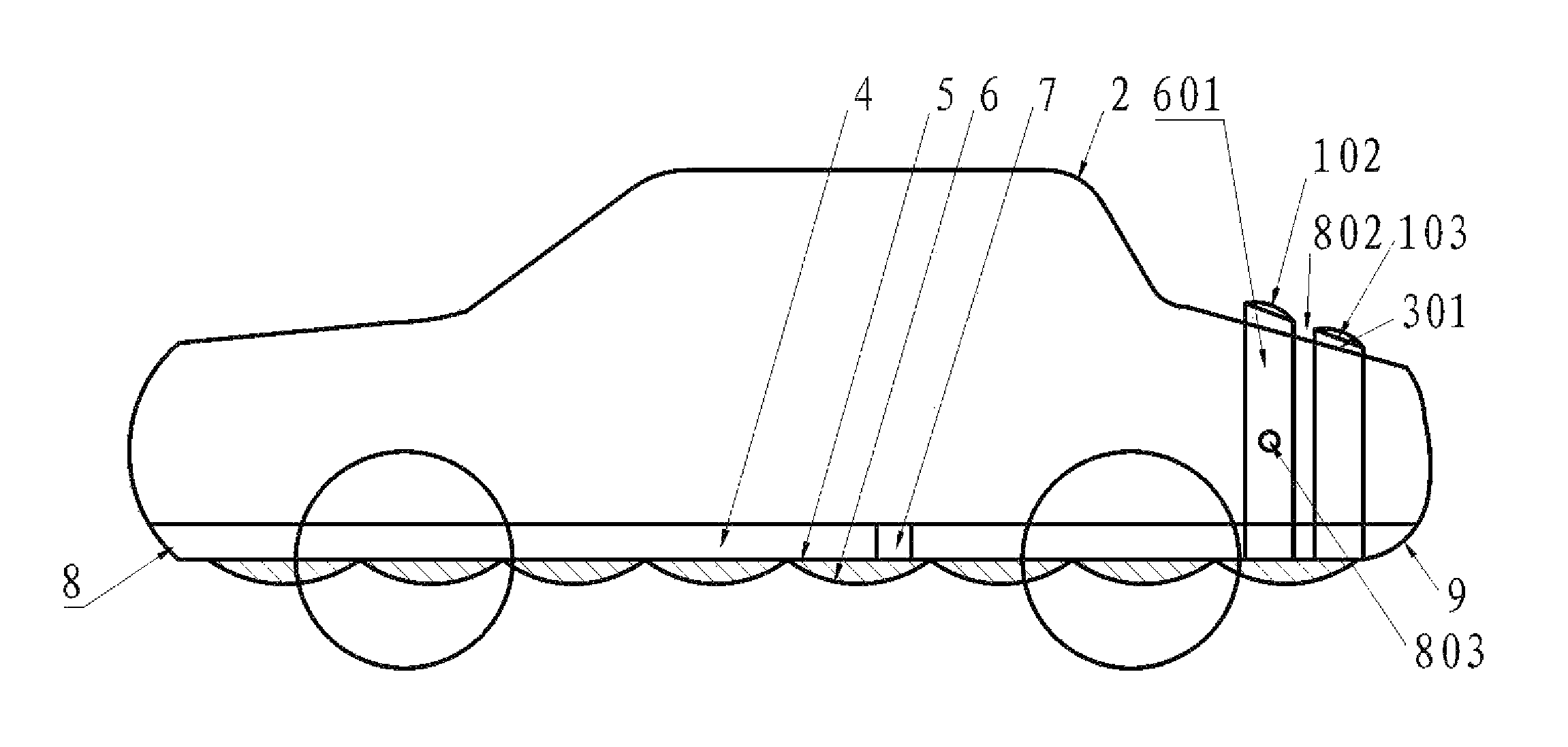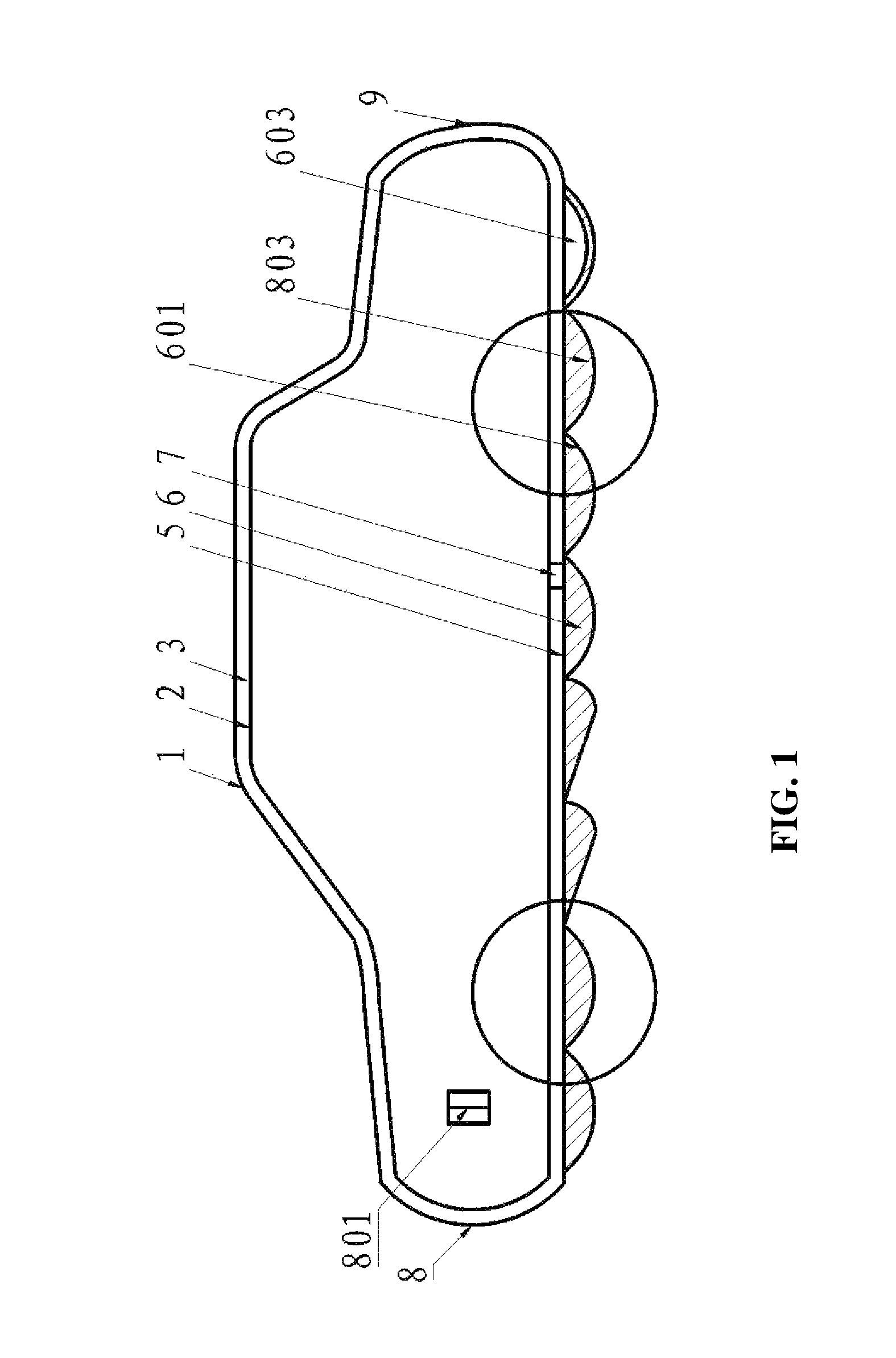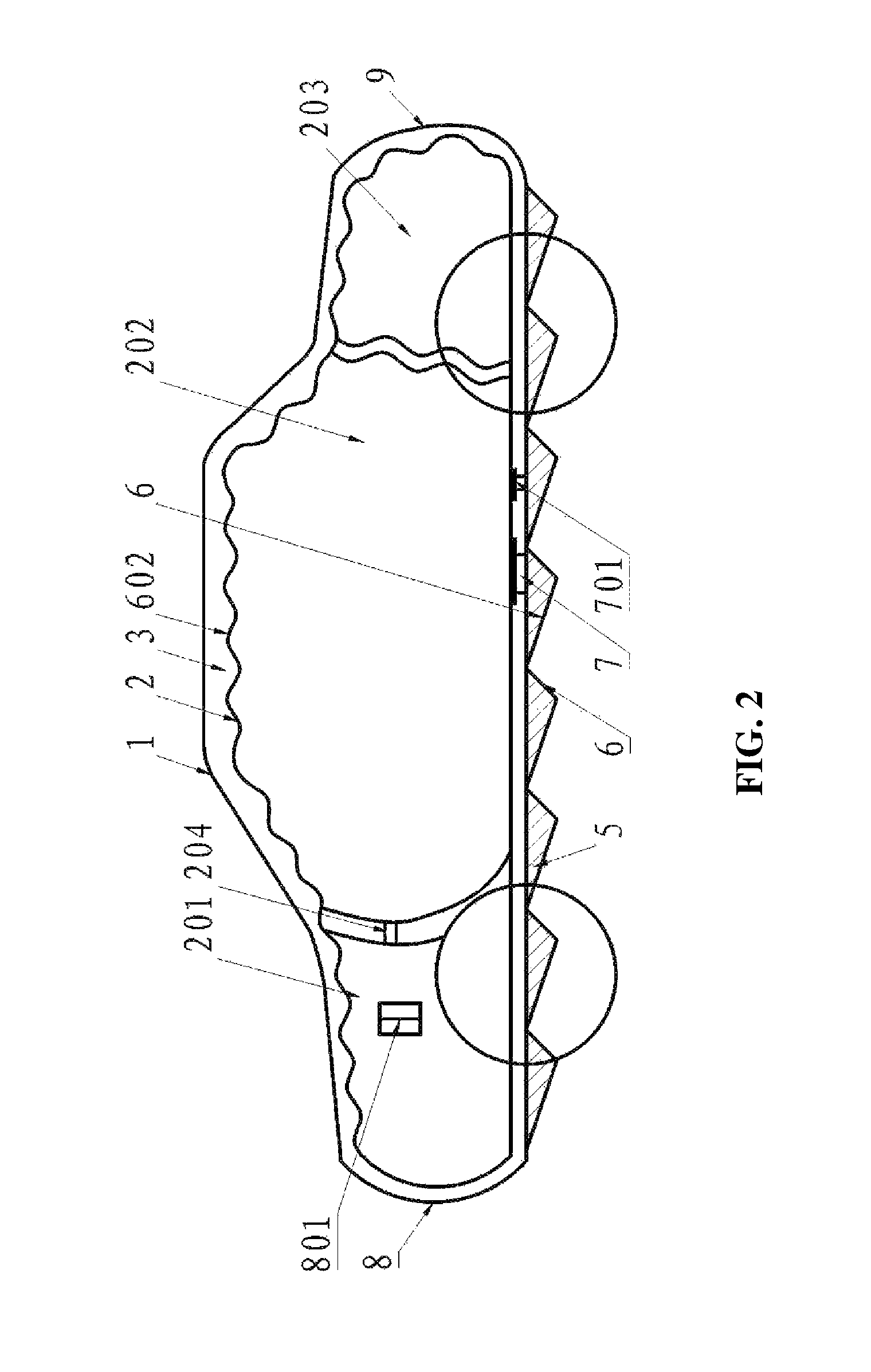Vehicle
a technology for vehicles and hulls, applied in the field of vehicles, can solve the problems of large amount of energy waste, unstable vehicle travel, and reduced tire-road adhesion, and achieve the effects of reducing the lifting force, and reducing the amount of energy was
- Summary
- Abstract
- Description
- Claims
- Application Information
AI Technical Summary
Benefits of technology
Problems solved by technology
Method used
Image
Examples
example 1
[0029]As shown in FIG. 1, an energy saving vehicle comprises a housing comprising an outer portion 1 and an inner portion 2. An air-flow channel 3 is disposed between the inner portion 2 and the outer portion 1 of the housing. The air-flow channel 3 communicates with an air outlet 9 arranged on a rear of the outer portion of the housing via a first air inlet 8 arranged on a front of the outer portion and a plurality of second air inlets 801 arranged on a periphery of the outer portion of the housing. A plurality of elastic devices 7 connected to one another are arranged between or around a bottom 5 of the housing and the inner portion 2 of the housing for reducing the vibration occurring in the travelling of the vehicle. Particularly, the inner portion of the housing comprises a curved upper surface and a flat lower surface, a lifting force is consequently resulted during the travelling of the vehicle; and the flexible connection of the elastic devices 7 functions in avoiding or att...
example 2
[0041]As shown in FIG. 2, the vehicle is the same as that in Example 1 except that the air-flow channel 3 communicating with the atmosphere via the first and the second air inlets 8, 801 divides the inner portion 2 of the housing into a first carrying cabin 201, a second carrying cabin 202, and a third carrying cabin 203. The carrying cabins are connected to one another via connecting pieces 204. When the vehicle travels, the air-flow channel 3 surrounds each carrying cabin, as each of the carrying cabins has a curved upper surface and a flat lower surface, the path of the air passing through the curved upper surface is different from that through the lower surface, resulting in a pressure difference and further producing a lifting force on each carrying cabin, and thus, a larger lifting force is produced under an overall action of the three carrying cabins 201, 202, and 203. The spoiler surface 6 can also be formed by a plurality of triangles.
[0042]The upper surface of each of the ...
example 3
[0046]As shown in FIG. 3, the vehicle is the same as that in Example 2 except that the outer portion 1 of the housing of the vehicle comprises a plurality of independent spoilers 601 arranged on surfaces of the upper and the lateral of the vehicle according to the profile of the vehicle. A lower part of the spoiler 601 is connected to the bottom 5 of the housing. An open air-flow channel 4 is formed between the inner portion 2 and the bottom 5 of the housing, and the open air-flow channel 4 communicates with the first air inlet 8 and the air outlet 9. The spoiler comprises a curved upper surface 102 and a flat inner surface 103. An additional air-flow channel 301 is formed between the flat inner surfaces 103 of the spoiler and the inner portion 2 of the housing. Pressure ports are formed between two adjacent spoilers and enable the additional air-flow channel 301 to communicate with the atmosphere.
[0047]In travelling of the vehicle, the air flows into the open air-flow channel 4 via...
PUM
 Login to View More
Login to View More Abstract
Description
Claims
Application Information
 Login to View More
Login to View More - R&D
- Intellectual Property
- Life Sciences
- Materials
- Tech Scout
- Unparalleled Data Quality
- Higher Quality Content
- 60% Fewer Hallucinations
Browse by: Latest US Patents, China's latest patents, Technical Efficacy Thesaurus, Application Domain, Technology Topic, Popular Technical Reports.
© 2025 PatSnap. All rights reserved.Legal|Privacy policy|Modern Slavery Act Transparency Statement|Sitemap|About US| Contact US: help@patsnap.com



